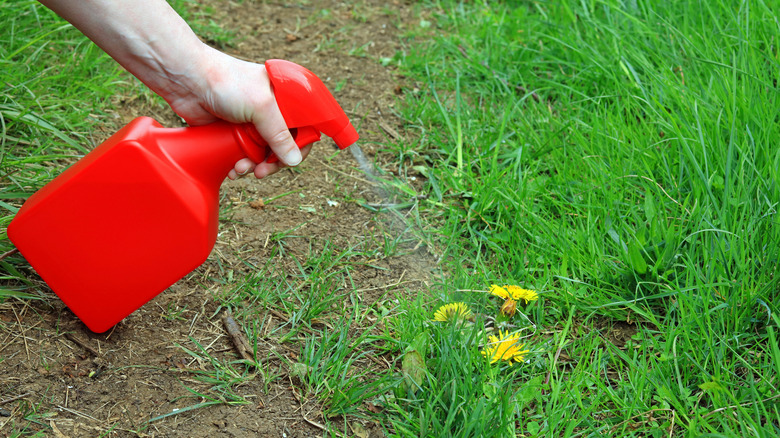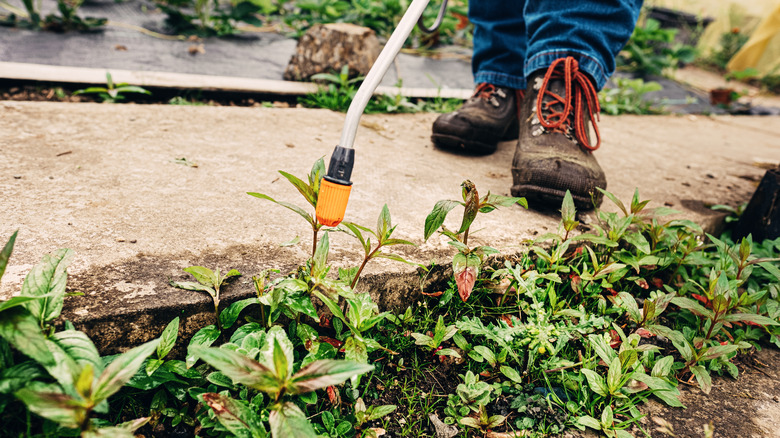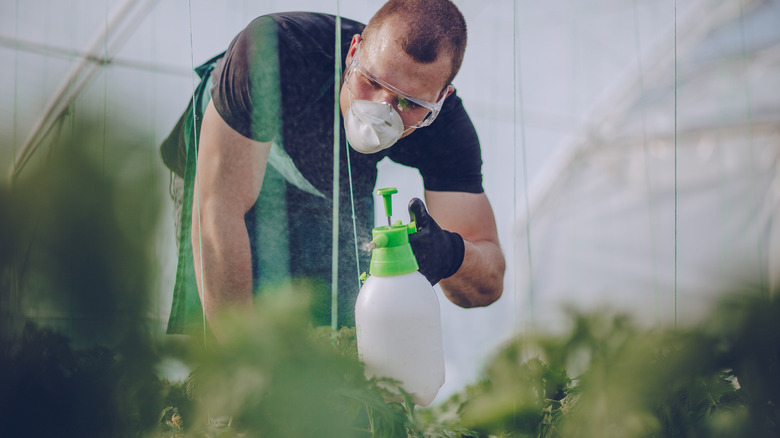What's The Point Of Bleaching Grass?
Controlling weeds and other plant growth on your property can be challenging. Greenery doesn't often like to yield to our boundaries, resulting in constant mowing, weed pulling, and other lawn care tasks. However, for some, bleach is the solution to unwanted growth. Whether it's a driveway, patio, or even just eliminating weeds in a garden, there will be areas where we don't wish for any growth to occur, and bleaching those spots aids in that endeavor.
Applying bleach to grass and other plant life permanently removes all future growth in that location. It also helps get rid of any pest issues you may have been having. Understanding how bleach affects the soil, how to properly apply it, and the safety measures that should be taken are crucial when deciding to bleach areas of your property. As you consider whether or not bleaching is a solution to your lawn care needs, keep in mind that this is not an environmentally friendly option and poses certain risks.
Bleaching grass
Bleach can be used to remove plant life from areas of your yard permanently. This is an option that people tend to turn to when looking for ways to completely eliminate invasive weeds and grass from areas like sidewalks, gravel driveways, outdoor pool areas, and patios. When the chemical is applied, the soil becomes uninhabitable by raising pH levels as the ground soaks up the chlorine and increases salt levels. This change in the soil creates unlivable conditions that result in chemical burning and don't allow plants to attain adequate water or other necessary microorganisms.
When applying bleach to the areas you hope to eradicate plant life, placing it in a spray bottle is beneficial to giving more control over its application. Spray the bleach on the desired regions and allow it to soak for two to three days before pulling up the dead foliage. Waiting a few days will allow the bleach to seep into the soil and make future growth impossible rather than just killing off the greenery it came into contact with. One cup of bleach is advised for every 6 square inches. While bleach can also be used to eradicate pest issues, like fleas or mosquitoes, this is not a practical solution. Bleach will kill everything in its path, not just the intended pests.
Taking safety precautions
Using bleach for indoor cleaning or landscaping has safety hazards that should be taken seriously. The toxic and corrosive chemical kills some of the strongest bacteria and can irritate the skin, eyes, and throat if not handled carefully. In addition to taking protective measures for yourself, you'll need to ensure safety protocols for the surrounding areas. The last thing you want is to accidentally contaminate places where you hope to see healthy and thriving plant life. Before applying bleach to your property, shield yourself with gloves, a mask, and eyewear, and plan to complete this task when children and pets aren't present.
To contain the application of bleach and prevent it from hindering unintended areas, check the weather carefully. Avoid using bleach outside in windy weather that could blow the chemical around, and confirm that no rain is expected for the following two to three days. You don't want runoff infecting other locations or entering nearby water reservoirs. Lastly, understand that when bleaching grass, you are not only killing off plant life but all life in the soil. If you find bleach has unintentionally invaded parts of your lawn, flood those areas with water as soon as possible. While this may not stop plants that come into contact with the chemical from dying, it will help prevent the ground from retaining it and becoming barren.


